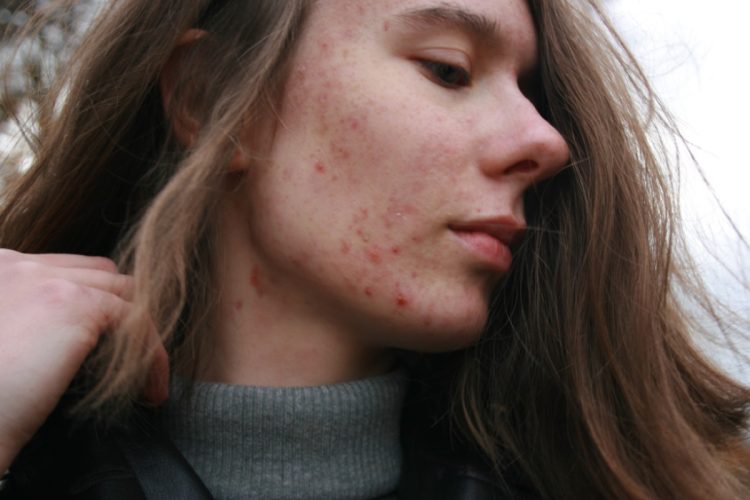Have you had your first retinol/exfoliant treatment and instead of smooth skin, you’re stuck with what looks like acne breakouts? That’s skin purging and is a natural response that happens when you use products that accelerate cell turnover. So it’s skin purging a bad thing? And how can you tell if your skin is purging or just breaking out?
What is skin purging and what causes it?
Skin purging is the skin’s natural response to certain products that accelerate the rate at which old cells die and new ones grow. This phenomenon is triggered by ingredients like retinoids, chemical acids, and benzoyl peroxide, which promote skin exfoliation and increase cell turnover.
What does this mean for your skin?
Well, when these ingredients get to work, they bring gunk, dirt, sebum, and hidden microcomedones (the earliest form of acne) to the skin’s surface. This process might initially lead to a burst of acne breakouts, and you’re likely to see new pimples, blackheads, and whiteheads.
However, these breakouts are not new. They’re existing issues that were lurking under your skin, and the purging process is simply bringing them to light quicker than it would have happened naturally. Skin purging is essentially the skin’s mechanism of clearing out hidden microcomedones. It’s a normal, natural response. Once this purging phase is over, your skin is likely to remain clearer and smoother for a longer period.
How to tell if your skin is purging?

- Skin purging looks like an acne breakout. If you recently had a treatment with active ingredients that increase cell turnover and your skin started to break out in areas where you normally get acne, that’s probably purging.
- Purging generally causes breakouts in areas where you normally get acne. If you’re noticing breakouts in new areas, it might not be purging.
- Purging breakouts look like small, red, or pink spots, and sometimes as whiteheads or blackheads. These breakouts should start healing within four to six weeks. If your skin doesn’t heal after this period, it’s probably not purging.
- If you’re experiencing rashes, hives, irritation, sensitivities, swelling, or burning, it likely indicates a reaction to the product and not purging breakouts.
Purging vs. breakout
Skin purging is different from a regular breakout or an allergic reaction to a product. Here’s how you can tell the difference:
- Skin purging usually occurs when you start using a new product with an active ingredient that accelerates cell turnover, while normal acne breakouts can happen anytime due to various factors like hormonal imbalance, diet, bacteria, and clogged pores, even if you haven’t added a new product to your skincare routine.
- Skin purging affects the areas of your face where you usually get acne, while normal breakouts can occur anywhere on your face.
- If you experience other forms of acne, such as papules, pustules, cysts, or nodules, that’s a normal acne breakout and not skin purging.
- Skin purging usually lasts for a few weeks, depending on how long it takes for your skin to renew itself, while breakouts can last longer or recur frequently.
When does skin purging start?
Skin purging typically happens within 24 hours to a week after using a new product containing active ingredients that increase cell turnover.
How long does skin purging last?
The entire purging process can last anywhere from four to six weeks, depending on your skin’s response and the intensity of the treatment.
How to treat skin purging
- Add one product at a time. When adding a new product to your routine, do it gradually. Start with a low concentration and increase it as your skin builds tolerance. Also, do not use a new product with active ingredients on a daily basis at first. For example, you can use a retinoid product once or twice a week at first, then increase to every other night or every night over time.
- Use soothing, hydrating, and calming products to balance out the effects of the active ingredients. We recommend a mild, sulfate-free cleanser, a moisturizer with ceramides or hyaluronic acid, and a sunscreen with zinc oxide or titanium dioxide.
- Don’t use a retinoid and an exfoliant on the same night.
- Use a clay mask to remove impurities and help your skin clear faster.
- Avoid applying heavy oils or occlusives like petrolatum on the skin, as they can block the shedding of dead cells and clog your pores.
- Don’t use other retinoids or exfoliants until your skin is recovered.
- Avoid picking or squeezing on breakouts, as this can lead to scarring.
- If the purging is severe or persistent, consult a dermatologist.
Read Next: How To Soothe Retinol Burns


